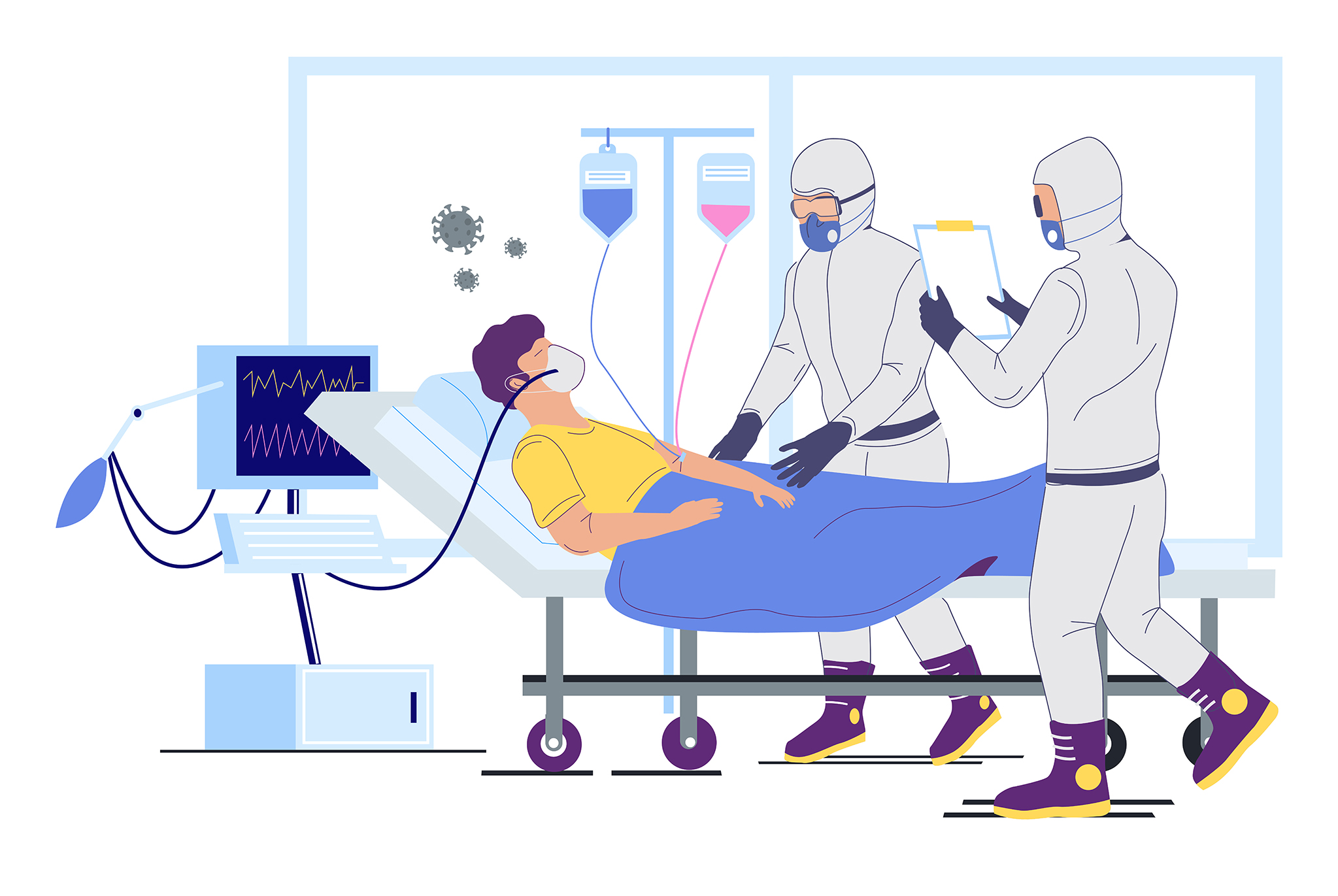Can COPD predispose a patient to severe COVID-19 infection?

The severity of COVID-19 illness caused by SARS-CoV-2 may extend from asymptomatic infection or mild self-limiting upper respiratory tract illness, to severe pneumonia with respiratory failure, or death.1 The presence of comorbidities such as diabetes, hypertension, chronic obstructive pulmonary disease (COPD) and malignancies correlate with worsened clinical outcomes of COVID-19;2 and indeed, COPD independently enhances susceptibility to COVID-19 infection owing to compromised lung reserves and up-regulated expression of angiotensin-converting enzyme 2 (ACE-2) receptors in the small airways.1 Additionally, the coexistence of COPD with other systemic diseases may cause disordered pulmonary ventilation, thereby increasing the risk of infection and jeopardising treatment outcomes.3
COPD is characterised by chronic bronchitis and emphysema with ensuing destruction of alveoli structure. Previous studies reported that comorbid COPD correlated with a more serious COVID-19 infection and inflammatory responses, leading to severe illness or death.3,4 However, the severity of COPD does not influence the clinical outcomes of COVID-19, including the length of hospitalisation, need for intensive care, respiratory failure and death.1
The impact of the COPD pathophysiology on the clinical course of COVID-19 was recently explored in a retrospective observational study at Wuhan Huoshenshan Hospital, involving 156 COVID-19 patients with and without (age- and sex- matched) pre-existing COPD (n=78 each).5 The primary outcome measures were the onset of ICU admission, use of mechanical ventilation, or death during hospitalisation; recorded secondary outcomes were virus clearance, disease progression, disease deterioration, and death. Individualised treatment for COVID-19 consisted of oxygen support, antivirals, secondary infection control, immune-modulators, and multi-organ support; whilst COPD treatment included the use of anti-asthmatics, inhaled corticosteroid, leukotriene receptor antagonist, phosphodiesterase-4 inhibitors, and expectorants, depending on patients’ needs.
The key findings of the study included:5
- The incidence of COPD significantly corresponded to older age and male sex (P<0.001), as reported by previous studies.1,3,4
- COPD was independently correlated with poor clinical outcomes.
- Patients with pre-existing COPD (in comparison with non-COPD counterparts), presented with significant dyspnoea (59.0% vs 37.2%; P<0.01) and required therapy with expectorants, sedatives, and mechanical ventilation (P<0.05), indicating the existence of acute exacerbations of COPD.
- Greater proportions of COPD patients showed significantly higher likelihood of developing respiratory failure (19.2% vs 5.1%; P<0.01), a marginally significant likelihood of developing cardiac insufficiency (10.3% vs 2.6%; P=0.050), and increased risk of mortality (HR, 3.875; P=0.065).
- Besides an increase in IL-6 levels (P=0.017), patients with COPD did not experience over-activated inflammatory responses or multiorgan injury (P>0.05).
- COPD patients exhibited longer viral clearance time from the respiratory tract.
- Although pre-existing COPD did not influence the risk of disease progression (hazard ratio [HR], 1.227; P=0.363), COPD increased the risk of disease deterioration by 139.4% (HR, 2.394; P=0.025) and the risk of unfavourable clinical outcomes by 230.8% (HR, 3.308; P=.013).
- Surprisingly, no significant difference in COVID-19 disease severity was observed between the COPD and non-COPD groups (62.8% vs 61.5%; P=0.868).
The occurrence of dyspnoea in the hospitalised COPD patients was attributed to – (i) the acute phase of COPD itself; and (ii) the synergistic pulmonary over-inflammation and functional collapse exerted by COPD and COVID-19.5
Bai Y and colleagues concluded that COPD pathophysiology itself does not account for the over-activated inflammation status seen in severe COVID-19.5 However, COPD may independently confer increased risk of unfavourable clinical outcomes by causing dysregulation of the antiviral immune response and subsequent susceptibility to virus-induced exacerbations and respiratory failure.5
References
- Lee SC, et al. Scientific reports 2021;11(1):3735.
- Guan WJ, et al. Respir 2020;55(6):2001227.
- He Y, et al. Med Sci Monitor Int Med J Exp Clin Res 2020;26:e927212.
- Alberca RW, et al. Front Physiol 2020;11:637627.
- Bai Y, et al. Medicine2020;101(18):e29141.










